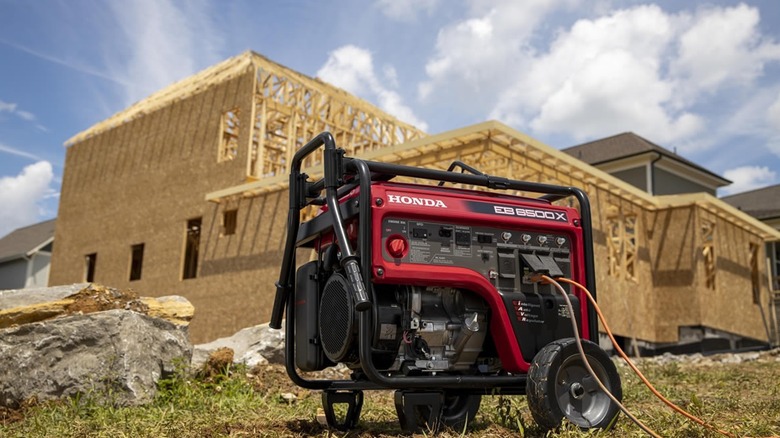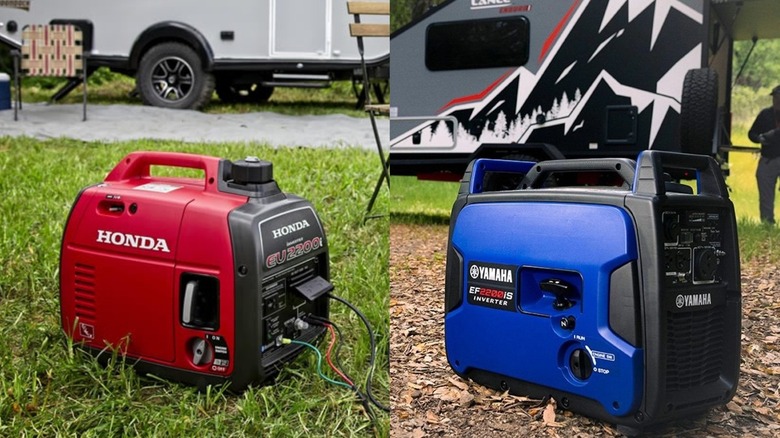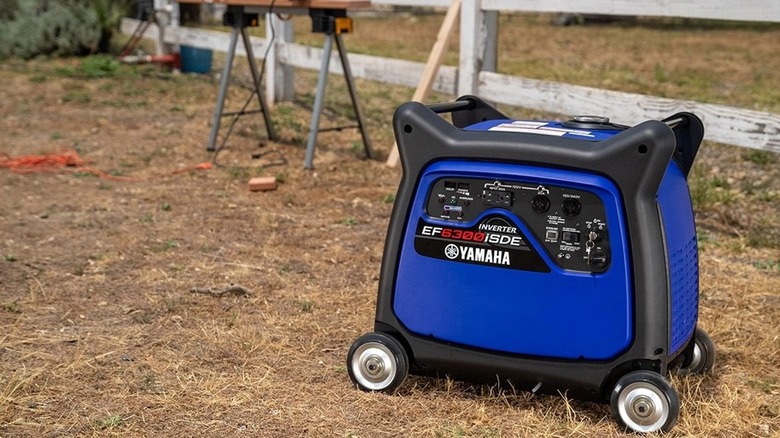Honda Vs. Yamaha Generators: How Do They Compare In Price & Power?
There are a variety of options when it comes to consumer grade portable generators. In fact, residential models made up just over 38% of the market in 2024, and are projected to grow annually more than 5% over the next decade. A few of the biggest brands in the industry are Honda and Yamaha, who continue to vie for an increasing share in the market.
Honda provides a much wider selection of generators, with more than double the models of rival Yamaha. In terms of price for units with the same output, Yamaha tends to be the less expensive choice between the two, especially when looking at the entry level 2,200-Watt options, where Yamaha is over $500 cheaper in some cases. Regarding power, the most robust Yamaha generator is the industrial grade EF7200D, with a peak output of 7,200 Watts for just over $3,000. Comparatively, Honda goes even further with its EB10000 industrial unit that offers a 688cc engine that produces a max of 10,000 Watts for just under $6,000.
Head-to-head matchup: Honda EU2200i vs Yamaha EF2200i
The 2,200-Watt generators are popular due to their user-friendly designs, adequate power for multi-use, and more economical price point. Both the Honda and Yamaha units offer some advantages along with a few drawbacks.
The Yamaha EF2200i wins handedly in terms of price, offered for under $600 on multiple online marketplaces. The Honda EU2200i retails for $1,099, making it the far more expensive option. The Yamaha also features a boost option, which temporarily enhances output for devices that have a significant start-up power draw. In addition, Yamaha's EF2200i includes some benefits such as an included fuel gauge and a larger tank at 1.25 gallons versus Honda's .95-gallon tank.
However, the Honda features a much smaller form factor and weighs more than 8-pounds less than the Yamaha, even though it also includes a larger engine. The Honda EU2200i comes equipped with a 121cc engine, which is far more potent than the Yamaha EF2200i's smaller 79cc option. The design from Honda enables easier access for maintenance, with a much larger oil spout, and panels that pop-off allowing you to reach parts like the spark plug. In terms of safety, the Honda is also superior as it features covers for all the outlets on the unit, while Yamaha's are completely exposed. While the Yamaha does include a physical fuel gauge, Honda provides the My Generator App, which offers a host of detailed information such as operation times, and maintenance recommendations on your smartphone.
How to select the right generator for you
When choosing a generator, consider what you'll be powering, and in what circumstances. For instance, a portable unit designed to run small electronics or an RV air conditioner, will offer far different capabilities than a generator made for construction tools.
In terms of the amount of power you'll need, it's vital to consider not just the Watts needed for running each item, but also how many Watts are required when powering on the device, appliance, or tool. For example, the average laptop will use around 200 Watts, and requires 200 Watts upon startup. However, a halogen light might use 250 Watts of running consumption, but draw as much as 500 Watts when first turned on.
Not only will you need to consider your energy requirements, but also other factors such as operation noise. Both Honda and Yamaha provide equally quiet inverter generators, making either brand ideal for outdoor recreation scenarios. However, you'll need to know how to safely hook up your RV to a generator.
Overall, while Yamaha is a major industry player in the world of generators, Honda continues to lead in more total market share for portable units. If your primary concern is budget, Yamaha is typically the more economical option. However, in terms of online review scores and popularity, Honda has the edge over Yamaha. In fact, Honda made our list of the best portable generators you can buy in 2024, ranked by consumer reports.


